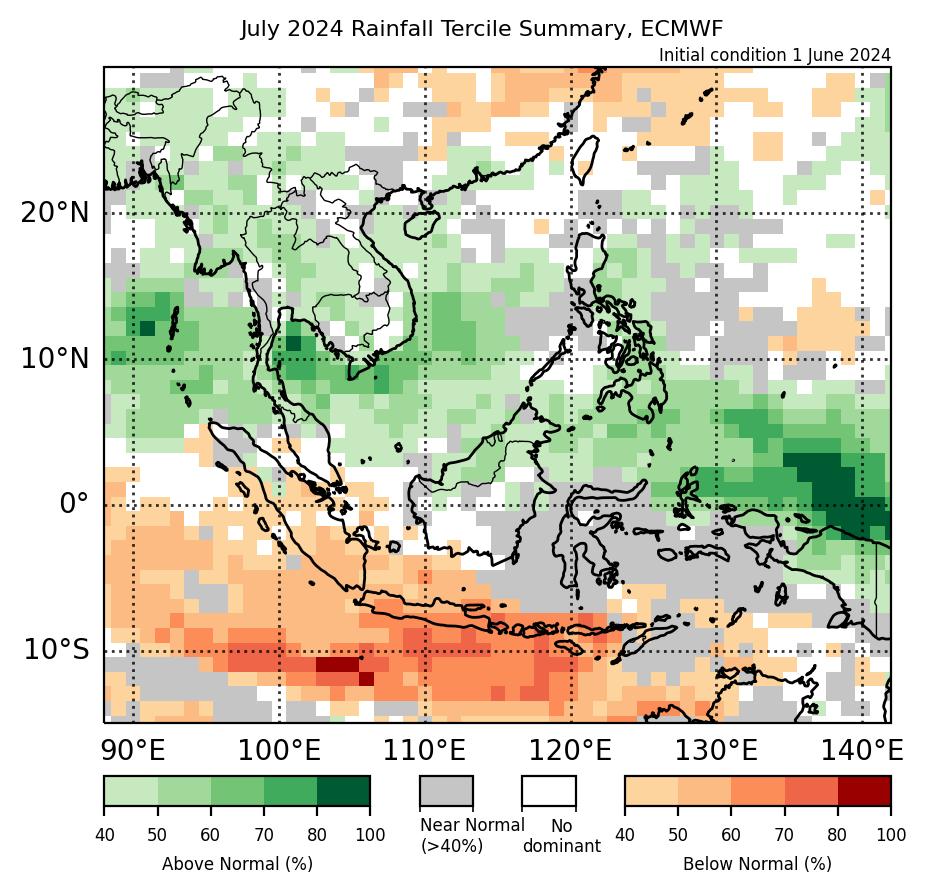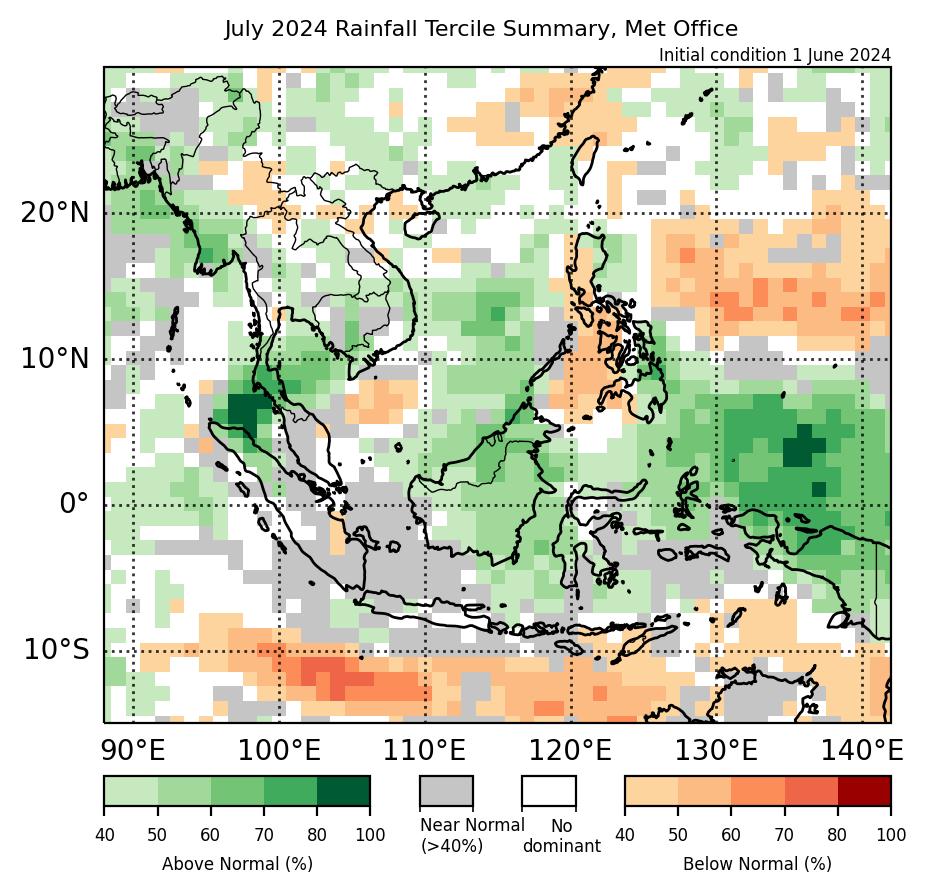Rainfall
Monthly Rainfall Outlook: July 2024
Issued: 30 Jun 2024
For July 2024, above-normal rainfall is predicted for much of the equatorial region.
For July 2024, above-normal rainfall is predicted for much of the equatorial region based on the multi-model ensemble (Figure 4). The NCEP model (Figure 1) shows the largest extent of above-normal rainfall across the region, followed by the UK Met Office model (Figure 3), and with then the ECMWF model (Figure 2). For above-normal rainfall over the equatorial region, models’ skill is moderate to good for the central and eastern regions, and moderate for the western region.
Above-normal rainfall is predicted over parts of western and central Mainland Southeast Asia based on the multi-model ensemble. The NCEP and ECMWF models show some increase in chance of above-normal rainfall over this region, while the UK Met Office model shows a mix of near- to above-normal rainfall. Models’ skill for the region is generally low.
Elsewhere, there is either no dominant terciles (southern Maritime Continent, eastern parts of Mainland Southeast Asia) or mix of below- to above-normal rainfall (the Philippines). Model skill is generally good for the southern Maritime Continent and poor to moderate elsewhere.

Figure 1: Rainfall tercile summary predictions of NCEP model for July 2024 (contains modified Copernicus C3S information).

Figure 2: Rainfall tercile summary predictions of ECMWF model for July 2024 (contains modified Copernicus C3S information).

Figure 3: Rainfall tercile summary predictions of UK Met Office model for July 2024 (contains modified Copernicus C3S information).

Figure 4: Rainfall tercile summary predictions of the multi-model ensemble for July 2024 (contains modified Copernicus C3S information).

Figure 5: Average climatological rainfall's lower tercile boundary for July based on CHIRPS (Reference period: 1991-2020).

Figure 6: Average climatological rainfall's upper tercile boundary for July based on CHIRPS (Reference period: 1991-2020).
The qualitative outlook is assessed for the region in general. For specific updates on the national scale, the relevant ASEAN National Meteorological and Hydrological Services should be consulted.